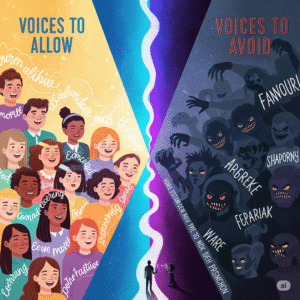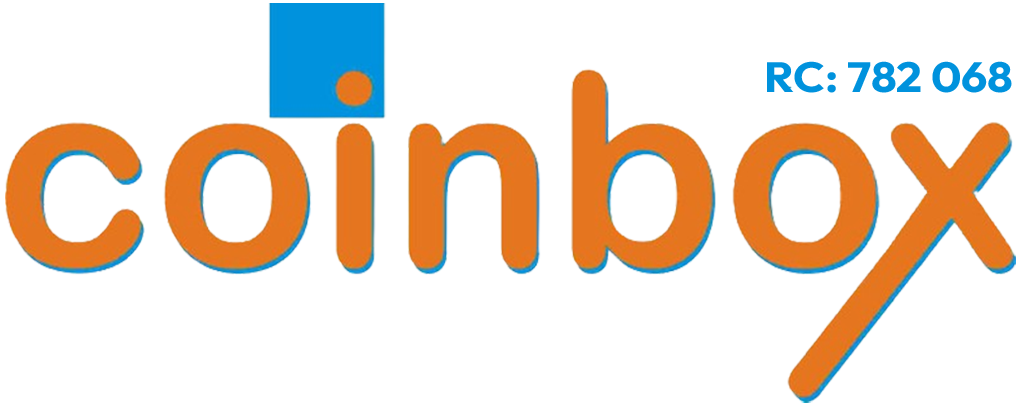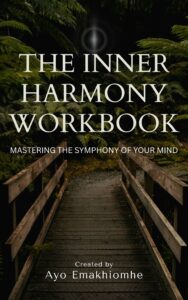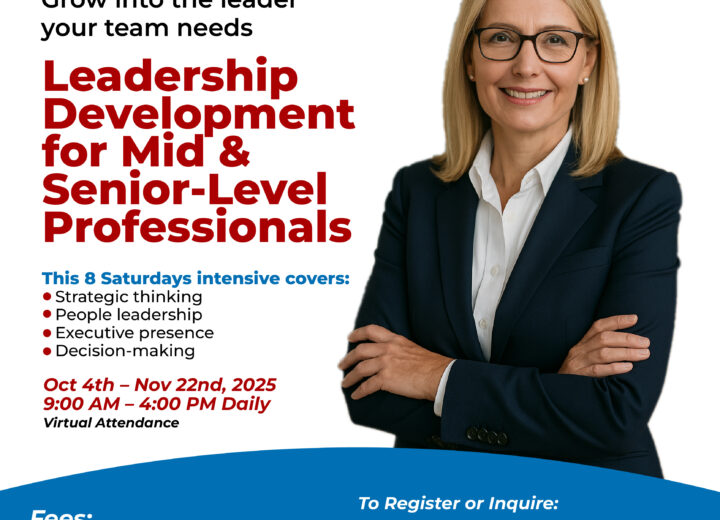Voices in My Head: Navigating the Silent Influencers Within (and Around) You
Have you ever found yourself in a moment of decision, or perhaps just going about your day, when a thought surfaces that feels strangely… not yours? Maybe it’s a nagging doubt, a sudden urge to conform, or an unshakeable belief that guides your next step. It’s not an audible voice, no, but a persistent whisper, a familiar echo in the chambers of your mind.
Welcome to the world of “silent influencers” – the internalized thoughts, beliefs, and perspectives of others that subtly (or not so subtly) shape who we are, what we do, and how we perceive the world. They’re the invisible threads woven into the fabric of our consciousness, often operating below the surface of our awareness. This blog post will demystify these powerful forces and equip you with the tools to not just identify them, but to manage and even leverage them for a richer, more authentic life.
Defining the “Silent Influencers”: Who Are These Voices?

So, who or how do these silent influencers become the “voices in our head”? It’s a fascinating journey of internalization that begins almost from birth and continues throughout our lives.
Think of your mind as a grand library, and each influential person or experience contributes a book, a chapter, or even just a compelling sentence.
- Early Childhood & Upbringing: This is where the foundational texts are written. Parents, teachers, caregivers, even family friends – their rules, advice, expectations, and belief systems are absorbed like sponges. “Finish your plate,” “Always be polite,” “Money doesn’t grow on trees” – these become ingrained axioms, often without conscious processing.
- Significant Relationships: As we grow, our inner council expands. Partners, close friends, mentors, and even former colleagues contribute their opinions, encouragement, criticisms, and worldviews. The way a past partner handled conflict might influence your current relationships, or a mentor’s unwavering belief in your potential might become your inner cheerleader.
- Cultural & Societal Narratives: We are products of our environment. Media, social norms, popular culture, and even the collective unconscious of our society feed us narratives about success, beauty, happiness, and acceptable behavior. “Everyone is doing it,” “You need to have X by age Y” – these broad strokes can become potent silent influencers, driving us towards external ideals rather than internal desires.
- Past Experiences & Trauma: Every triumph and setback leaves an imprint. Lessons learned, protective mechanisms developed to avoid pain, and deeply ingrained fears from past traumas can manifest as cautionary or self-sabotaging voices. The voice that says, “Don’t take risks, remember what happened last time,” is often a silent influencer born from past pain.
- Aspirations & Ideals: Interestingly, even the “voice” of who you aspire to be can be a silent influencer. This often stems from role models, fictional characters, or personal ideals you’ve cultivated. It’s the voice pushing you towards discipline, creativity, or courage, often echoing someone you admire.
The key insight here is that these voices are rarely a conscious choice; they are often subconscious, deeply embedded over time, shaping our worldview before we even realize it.
Identifying Your Inner Council: How to Spot Them

Once you understand how these voices form, the next crucial step is to identify them. It’s like becoming a detective of your own mind.
One day, Sarah, a budding entrepreneur, found herself constantly second-guessing her innovative ideas. Every time she brainstormed a bold new marketing strategy, a voice in her head would whisper, “Stick to what’s safe. Remember what happened to Uncle John’s business?” This wasn’t her voice of caution; it was the internalized voice of her well-meaning but risk-averse father, whose advice had always centered on security over ambition.
So, how can you spot these silent influencers?
- Self-Reflection & Journaling: This is your primary tool. Start noticing recurring thoughts, doubts, or affirmations that don’t quite feel like your authentic self. Write them down. Who might have said something similar to you in the past?
- Emotional Triggers: Pay close attention to your emotional responses. When do you feel sudden guilt, inadequacy, immense pressure, or a strong, almost external, conviction? These are often signs that a silent influencer is at play.
- Decision-Making Patterns: Do you often find yourself seeking external validation before making a choice? Or do you have a strong internal compass that feels authentic to you? The desire for external approval can be a strong indicator of an internalized conformist voice.
- Actionable Tip: Listen for phrases like “I should,” “They would never approve,” “What if…” These are often tell-tale signs that an external voice has become an internal command.
Categories of Silent Influencers: The Archetypes Within
Just as a theatrical play has its cast of characters, your inner world is populated by different archetypes of silent influencers. Recognizing their categories can help you understand their motivations and impact.
- The Critic: This is perhaps the most common and often the most damaging. Negative, judgmental, and self-doubting, this voice loves to point out flaws and predict failure. (“You’re not good enough,” “That’s a stupid idea,” “You’ll just mess it up.”)
- The Encourager/Mentor: On the brighter side, this voice is positive, supportive, and guiding. It echoes the wisdom and belief of those who championed you. (“You’ve got this,” “Remember what you learned from that challenge,” “Keep going, you’re on the right track.”)
- The Pragmatist/Realist: This voice is focused on logic, risks, and practicalities. It can be incredibly valuable for grounding you but can also stifle innovation. (“Have you considered the financial implications?” “Is this truly feasible?”)
- The Conformist: Driven by a desire for social acceptance and a fear of judgment, this voice pushes you to fit in. (“What will people think?” “You can’t be different.”)
- The Rebel: In opposition to the conformist, this voice pushes against norms and seeks independence, sometimes to a fault. (“Don’t tell me what to do!” “I’ll prove them all wrong.”)
- The Dreamer/Visionary: This voice is all about possibilities, aspirations, and pushing boundaries. It fuels creativity and future-oriented thinking. (“Imagine if…” “What’s the biggest impact you could make?”)
Understanding these categories allows you to better discern the source and intent behind the whispers in your head.
The Double-Edged Sword: Advantages and Disadvantages

Having these silent influencers is a fundamental part of the human experience, and like many things, they come with both significant advantages and drawbacks. It’s a double-edged sword.
Advantages of Having Them:
- Guidance & Wisdom: We benefit immensely from the accumulated wisdom and experiences of others. A parent’s cautionary tale about debt, a mentor’s strategic advice, or a grandparent’s life philosophy can provide invaluable guidance, steering us away from potential pitfalls.
- Perspective: Silent influencers offer different angles of a situation, broadening our understanding. If we only listened to our own immediate desires, we might miss crucial considerations.
- Motivation: Positive voices – those of cheerleaders, inspiring figures, or even our own aspirational self – can push us beyond our comfort zone and encourage us to achieve more than we thought possible.
- Safety & Caution: The pragmatic or cautious voices, while sometimes frustrating, can prevent impulsive mistakes and ensure we consider the long-term consequences of our actions.
Disadvantages of Having Them:
- Self-Doubt & Insecurity: The relentless assault of the inner critic, often echoing past harsh judgments, can erode self-esteem and lead to a pervasive sense of inadequacy.
- Indecision & Paralysis: When too many conflicting voices clamor for attention, it can lead to analysis paralysis, making even simple decisions feel overwhelming. The fear of choosing “wrong” according to one of these voices can be crippling.
- Loss of Authenticity: Living by someone else’s script, consciously or unconsciously following the dictates of internalized voices, can lead to a profound sense of not being true to oneself.
- Anxiety & Stress: The pressure to live up to external expectations, or the constant internal debate, can generate significant anxiety and stress, impacting both mental and physical well-being.
Consider Mark, a talented artist who struggled to sell his unique, abstract pieces. Every time he prepared for an exhibition, the voice of his pragmatic uncle, a successful accountant, would tell him, “Art doesn’t pay the bills. Why don’t you create something more marketable, like portraits?” This internalized voice, while well-intentioned, led Mark to create pieces that were less fulfilling and, ironically, less appealing to his true audience. He eventually realized he was letting a financial voice dictate his creative soul.
The Good, The Bad, and The Ugly of Dealing with Them

The way we engage with these silent influencers dictates our experience – from empowering growth to debilitating self-sabotage.
The Good:
- Learning Discernment: Mastering the art of identifying and evaluating these voices allows you to choose which ones to heed and which to dismiss. This builds critical thinking and self-awareness.
- Gaining Confidence by Choosing Your Own Path: When you consciously decide to follow your authentic self despite conflicting internal messages, it builds immense self-trust and confidence.
- Building Resilience: Learning to withstand the criticisms and doubts, especially from internalized negative voices, strengthens your mental fortitude.
- Using Positive Influences as a Springboard: When you actively embrace the voices of encouragement and wisdom, they can propel you forward, acting as powerful catalysts for personal and professional growth.
The Bad:
- Constant Internal Conflict: A perpetual battle between opposing internal voices can be exhausting and emotionally draining, leaving you feeling fragmented and indecisive.
- Feeling Trapped or Overwhelmed: When negative or conflicting voices dominate, it can feel like being caught in a mental cage, unable to move forward or find peace.
- Regret Over Unfulfilled Potential: Allowing limiting or fear-based voices to dictate your choices can lead to a lifetime of “what ifs” and the bitter taste of unrealized dreams.
The Ugly:
- Mental Health Challenges: Persistent, overwhelming criticism or self-doubt from internalized voices can contribute significantly to anxiety, depression, and other mental health struggles, often leading to a diminished quality of life.
- Damaged Relationships Due to External Pressures: If you consistently act on the internalized pressures to conform or please others, it can lead to inauthentic relationships, resentment, and a feeling of being misunderstood by those who truly care about you.
- Complete Loss of Self-Identity: In the most extreme cases, allowing overwhelming external voices to completely drown out your own authentic desires can lead to a profound sense of disconnection from yourself, leaving you feeling lost and without a clear sense of who you are.
Voices to Avoid, Voices to Allow: Curating Your Inner Circle

Just as you carefully select your real-life companions, you must become the discerning gatekeeper of your inner circle. Not all voices deserve a seat at your table.
Voices to Avoid (or at least, to challenge vigorously):
- The Chronic Critic: This voice is often baseless, overly harsh, and offers no constructive pathway forward. If a thought consistently tells you “You’re worthless,” “You always fail,” or “There’s no point,” it’s time to show it the door.
- The Fear-Monger: This voice paralyzes you with worst-case scenarios, often exaggerating potential dangers and ignoring possibilities for success. If a thought says, “Don’t even try, it’s too risky, you’ll lose everything,” question its true intent.
- The Saboteur: This voice actively undermines your confidence, dreams, and well-being. It might convince you to procrastinate, indulge in unhealthy habits, or self-sabotage just as you’re on the brink of success.
- The Envious/Competitive Voice: This voice constantly compares you to others, breeding resentment and inadequacy. It wishes ill or secretly hopes for others’ failures to make you feel better about yourself.
Voices to Allow (and actively cultivate strategically):
- The Wise Mentor: This voice offers objective advice, insights, and a broader perspective based on experience. It asks clarifying questions and gently guides, rather than dictates.
- The Encourager: Providing genuine support and belief in your capabilities, this voice reminds you of your strengths and past successes. It’s the voice of your biggest fan.
- The Objective Realist: This voice grounds you in reality without stifling ambition. It helps you assess risks and resources effectively, but it does so from a place of support, not fear.
- The Inspired Visionary: Fueling your creativity, passion, and dreams, this voice opens up possibilities and encourages you to think beyond current limitations. It’s the voice that dares you to imagine.
Actionable Tip:
Imagine these voices as people in a room. Who would you invite to stay, offering them a comfortable chair and your full attention? And who would you politely (or firmly, if necessary) ask to leave, explaining that their presence is no longer serving you?
The Right Voice for the Right Stage: Life and Business

The dynamic nature of life and business means that the “right” voices to prioritize will shift. The wise conductor knows which instruments to emphasize at different points in the symphony.
In Life Stages:
- Youth/Learning: During these formative years, we are naturally more receptive to guidance. The voices of parents, teachers, and foundational role models are crucial for developing core values and skills.
- Career Building: As you navigate your career, the voices of mentors, industry experts, and successful figures in your field become paramount. They offer insights into strategy, networking, and professional development.
- Parenthood: If you become a parent, the voices of nurturing, responsibility, patience, and unconditional love take center stage, often drawing from your own upbringing or from parenting experts.
- Retirement/Later Life: Here, voices of reflection, passion, legacy, and perhaps newfound personal interests gain prominence. The focus shifts from external achievement to internal fulfillment.
In Business Stages:
- Startup: At this nascent stage, you need the visionary to dream big, the risk-taker to push boundaries, and the market researcher to understand the landscape. This is not the time for overwhelming caution.
- Growth: As your business expands, the strategist for scaling, the team builder for effective collaboration, and the financial manager for sustainable operations become key.
- Scaling: When you’re ready to expand significantly, the delegator to empower others, the innovator to stay ahead, and the systems optimizer to streamline processes are the voices you need to amplify.
- Crisis: In moments of challenge, the calm problem-solver to maintain composure, the resilient leader to inspire confidence, and the adaptable strategist to pivot effectively are essential.
Key Insight:
The ability to consciously shift which voices you prioritize, depending on your current life or business stage, is crucial for adaptation, growth, and ultimately, success. Trying to use a “startup voice” during a crisis can be detrimental.
Drawing the Line: When Voices Become Overwhelming

Sometimes, the symphony of inner voices can devolve into a cacophony, leaving you feeling overwhelmed, paralyzed, and profoundly drained. When this happens, it’s critical to draw a line and reclaim your mental space.
Maria had been working tirelessly on a new business proposal, but weeks of sleepless nights were plagued by relentless self-doubt. The voice of her perfectionist mother, internalized from years of high expectations, kept telling her, “It’s not good enough. You’ve missed something. Everyone will see your flaws.” Maria was spiraling. Finally, exhausted, she sought therapy. She learned to identify this “voice” as separate from her own authentic self and, in a powerful exercise, gently but firmly told it, “Thank you for trying to protect me, but I choose to learn from my mistakes, and this project is ready.”
Here’s how to draw that line:
- Mindfulness & Meditation: These practices create a crucial space between you and your thoughts. By observing thoughts without judgment, you begin to see them as transient phenomena, not as absolute truths. This allows you to detach from overwhelming voices.
- Cognitive Behavioral Techniques (CBT): CBT is a powerful tool for challenging negative thought patterns. When a negative voice surfaces, ask: “Is this thought truly factual? What evidence do I have to support it? Is there another way to look at this?”
- Setting Boundaries: This applies to both external and internal influences. Physically and mentally distance yourself from toxic people or information that feeds negative internal voices. Internally, you can tell an overwhelming voice, “Not now. I will address you later, or perhaps not at all.”
- Seeking Professional Help: If persistent, overwhelming voices lead to significant distress, anxiety, or depression, don’t hesitate to seek therapy or counseling. A mental health professional can provide personalized strategies and support.
- Self-Compassion: Treat yourself with kindness, even amidst the noise. Recognize that these voices are often attempts (albeit sometimes misguided) of your mind to protect you. Instead of fighting them, try gentle acknowledgement followed by redirection.
Using the Voices for Success: Harnessing Your Inner Council

The ultimate goal isn’t to silence all voices, but to become the conscious conductor of your inner orchestra, using each instrument for its highest purpose.
- Active Listening (to yourself): Don’t just let thoughts wash over you. Consciously listen to the “voices.” Discerning which ones are truly helpful, aligned with your values, and conducive to your growth is key.
- Strategic Integration: The most successful individuals don’t listen to just one voice. They combine insights from the pragmatist with the vision of the dreamer, the caution of the realist with the encouragement of the mentor. This forms a well-rounded perspective.
- Internal Dialogue: Engage in conscious conversations with your inner voices. If the critic says, “You can’t do it,” respond with, “Why not? What evidence do I have from past successes?” or “What small step can I take?”
- Testing the Waters: Don’t just blindly follow any voice. Act on positive, empowering voices and observe the results. This builds a feedback loop, reinforcing which voices lead to positive outcomes.
- Reframing Negative Voices: Transform “I can’t” into “How can I?” or “What would it take to…?” This shifts the focus from limitation to possibility.
- Goal Setting: Align your actions and intentions with your most empowering inner voices. Let the voice of your inspired visionary set the grand goal, and the voice of your disciplined mentor guide the daily steps.
Do We Need More Than One Voice at a Time?

Absolutely! Believing we only need one voice at a time, or that one voice holds all the answers, can lead to tunnel vision and imbalanced decisions.
Think of a healthy inner council like a diverse board of advisors for a successful company. Each board member brings a unique perspective, expertise, and way of thinking to the table – the financial expert, the marketing guru, the visionary CEO, the legal counsel, the HR specialist. No single person has all the answers, and a well-rounded decision is made by considering input from various angles.
The goal isn’t to silence all voices, but to orchestrate them into a harmonious and productive symphony. Sometimes, the bold trumpet of the visionary needs to lead. At other times, the steady rhythm of the pragmatist provides the necessary grounding. And in moments of doubt, the gentle swell of the encourager can lift your spirits. The art lies in being the conscious conductor, knowing when to amplify one voice and when to quiet another, all in service of your deepest values and highest aspirations.
Want to dive deeper into mastering your mindset and cultivating your most empowering inner voices? Download our “Inner Harmony Workbook” [Click here] for practical exercises, guided reflections, and strategies to become the confident conductor of your own life. Let’s turn those whispers into power.
Conclusion: Your Symphony, Your Life

The “voices in your head” are not a sign of weakness or peculiarity; they are an inherent, albeit complex, part of the human experience. They are the echoes of our past, the reflections of our present influences, and the blueprints for our future.
The power lies not in wishing them away, but in acknowledging their presence, understanding their origins, and consciously choosing which ones to amplify and which to diminish. You are the conductor of your own inner orchestra. Embrace the diversity of your inner council, learn to discern their intentions, and with intention and practice, you can transform a potential cacophony into a powerful, guiding symphony. Your life is your masterpiece – conduct it with purpose and authenticity.
Want to dive deeper into mastering your mindset and cultivating your most empowering inner voices? Download our “Inner Harmony Workbook” [Click here] for practical exercises, guided reflections, and strategies to become the confident conductor of your own life. Let’s turn those whispers into power.
Ready to Conduct Your Own Inner Orchestra?
What “silent influencer” are you ready to acknowledge and transform today? Share your insights and experiences in the comments below! Your journey might just inspire someone else.
Want to dive deeper into mastering your mindset and cultivating your most empowering inner voices? Download our “Inner Harmony Workbook” [Click here] for practical exercises, guided reflections, and strategies to become the confident conductor of your own life. Let’s turn those whispers into power.
Key definitions
Here are definitions for the keywords from the blog post framed as internal voices or roles within an individual, especially relevant to entrepreneurship or personal development:
- The Visionary: This voice represents the part of you that conceives of grand ideas, future possibilities, and the ultimate long-term goals. It’s the “what if” voice that sees beyond the present.
- The Risk-Taker: This voice encourages stepping outside of comfort zones and embracing uncertainty. It’s the part that pushes for bold moves, even when the outcome isn’t guaranteed.
- The Market Researcher: This voice is driven by curiosity about the external world. It seeks data, understands trends, analyzes competition, and identifies customer needs and desires.
- The Strategist: This voice is the architect of plans. It thinks several steps ahead, outlines courses of action, and maps out how to achieve objectives efficiently and effectively.
- The Team Builder: This voice recognizes the importance of collaboration and synergy. It’s the part that fosters positive relationships, delegates effectively, and motivates others towards a common goal (even if those “others” are just different aspects of oneself).
- The Financial Manager: This voice is concerned with resources and their allocation. It meticulously tracks budgets, evaluates investments, and ensures sustainability and profitability.
- The Delegator: This voice understands that one person cannot do everything. It’s the part that identifies tasks that can be outsourced or entrusted to others, freeing up time and energy for higher-level functions.
- The Innovator: This voice thrives on novelty and improvement. It constantly seeks new ways of doing things, challenges existing norms, and looks for breakthroughs and creative solutions.
- The Systems Optimizer: This voice is all about efficiency and process. It looks for ways to streamline operations, eliminate waste, and improve workflows to achieve better results with less effort.
- The Calm Problem-Solver: This voice remains composed under pressure. When faced with obstacles, it systematically analyzes the situation, identifies solutions, and executes them without panic.
- The Resilient Leader: This voice possesses the strength to bounce back from setbacks and challenges. It views failures as learning opportunities and inspires continued effort despite adversity.
- The Adaptable Strategist: This voice is flexible and resourceful. It can pivot plans quickly in response to changing circumstances, remaining effective even when the initial strategy needs modification.
- Tunnel Vision: This represents a limiting internal state where focus is excessively narrow, often to the exclusion of important peripheral information, alternative perspectives, or potential opportunities/threats.
- The Pragmatist: This voice is grounded in reality and practicality. It focuses on what is achievable, sensible, and realistic, often tempering the grander ideas of the dreamer.
- The Dreamer: This voice is imaginative and aspirational. It dwells on possibilities, future achievements, and ideal scenarios, providing the initial spark for innovation and vision.
- The Realist: Similar to the pragmatist, this voice critically assesses situations based on facts and objective reality, often providing a necessary counterpoint to overly optimistic thinking.
- The Mentor: This voice embodies wisdom and guidance. It draws upon past experiences and learned lessons to offer advice, support, and direction, both to oneself and potentially to others.
Want to dive deeper into mastering your mindset and cultivating your most empowering inner voices? Download our “Inner Harmony Workbook” [Click here] for practical exercises, guided reflections, and strategies to become the confident conductor of your own life. Let’s turn those whispers into power.






